I have to say I am surprised at the general interest in this series of articles on the subject of antique lace. Possibly lace is something you have never even thought about before, but have a look. You may be amazed!
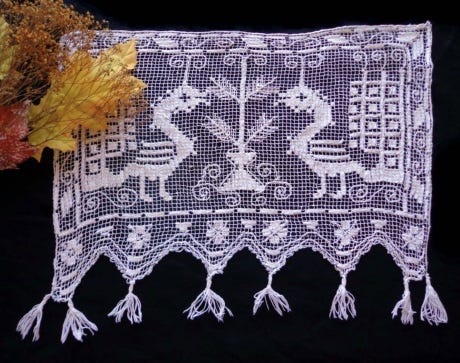
Italians are, and have been for centuries, recognized as expert lace makers and embroiderers, creating their art with both needles and bobbins. Each region of Italy produces its own special kind of handiwork. With a little study, a lace enthusiast can look at a basket of Italian handwork and point out, “That is Tuscan lace, that is Venetian, that is Ligurian, that is Umbrian, Milanese, Genovese.” Each has its own signature style and is fairly easy to identify with a little practice. It is all beautiful in design and all expertly made.
One of the most charming design elements in some Italian lace and embroidery is that of mythical creatures, eccentric animals and birds. Have a look at the photos of these four different types of Italian lace and see if you can determine which creatures are being depicted – some are easier than others. I will give you my guesses at the end – and yes, many of them are just guesses.
Filet lace is the technique of hand-embroidering on knotted net that is much like fishermen’s nets. First the artisan makes the square-holed knotted net. Then she creates designs on the net by darning (embroidering) in and out of the net using a long blunt needle. Several Italian regions have their own specific style of filet lace, such as Tuscany, Sicily, and Sardinia. It is a lace that is commonly found in the US, and is relatively inexpensive.
Buratto is an Italian needle lace that has hand-darned designs similar in appearance to filet lace, but with one important distinction—it is darned onto a woven mesh cloth (either machine made or handmade), rather than on the knotted net used for filet. Buratto tends to be heavier and denser in appearance than filet, due to the nature of the mesh used - Buratto mesh has a single thread vertically, and two twisted threads horizontally. Filet has only one in each direction. This lace is sometimes found in the US, but rarely, and can be a bit expensive.
Punto Tirato is embroidered drawn-thread lace. The lace starts out as one solid piece of woven linen. The lace maker actually pulls threads out of the linen in a specific pattern to create open spaces. Then she embroiders in, out, over and under the airy spaces left behind to make the lace. Punto tirato is regularly found in the US, but the animal patterns are not common. The animal laces are valued higher than the florals or geometric designs. Sicily is well-known for its Punto Tirato lace.
Punto Deruta, pulled-thread embroidery, is made on very rustic, loosely woven linen cloth. No threads are removed from this cloth by the lace-maker. It is made by hand-embroidering under tension, pulling the embroidery thread tightly to create an open, lacy effect in the woven linen. It is mostly produced in Deruta and other areas of Umbria, Perugia. It is not frequently found in the US.
I hope you enjoyed learning about the basic structure of four different Italian laces and seeing these fantasy animals. Tell me how you did on your guesses, using the comment box. There is no way of knowing what the lacemaker had in mind on some of these creatures, but here is what I think:
1. Peacocks with very fancy tail feathers, with a tree 2. Geese at a fountain
3. Lions with top knots, long tails, and wild manes 4. Birds and fruit tree
5. Lions and trees 6. Bird with a worm 7. Stag with long antlers and a top knot
8. Birds and a large urn 9. Turkeys and a tree 10. Doves in a vineyard
11. Flying gryphon 12. Geese drinking from a fountain 13. Cockerels
14. Birds, deer, goat and dog 15. Birds at a fountain, little goats around the edge
16. Goat 17. Winged lion of St. Mark 18. Winged gryphon
My lace reference website, helps you identify and learn more about antique lace. The Rook and The Raven
My little store on ebay, offers modest laces and linens https://www.ebay.com/str/therookandtheraven




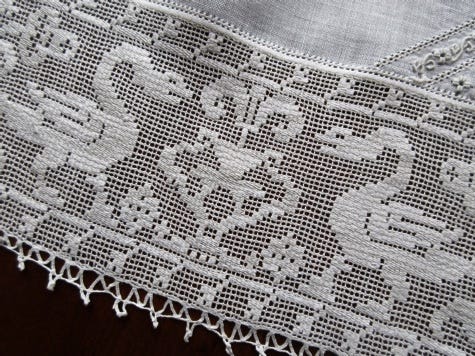
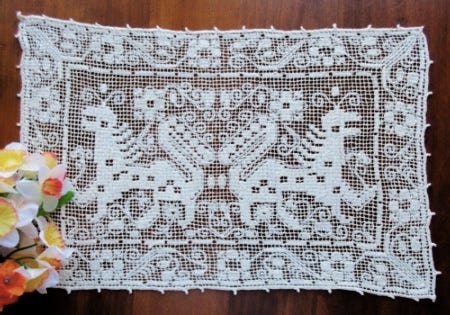
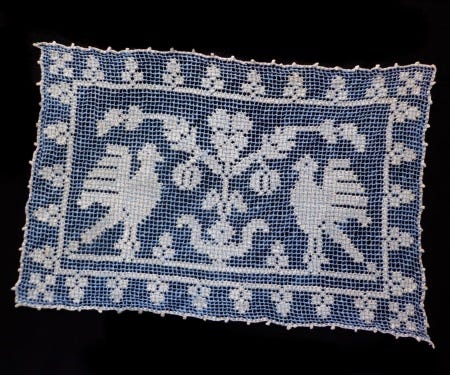
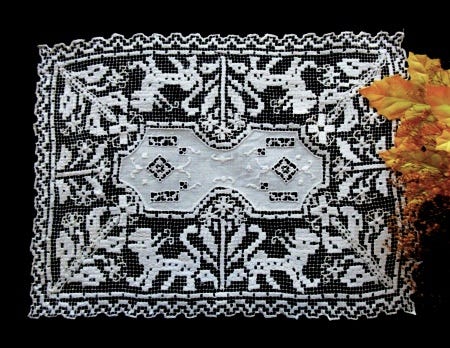
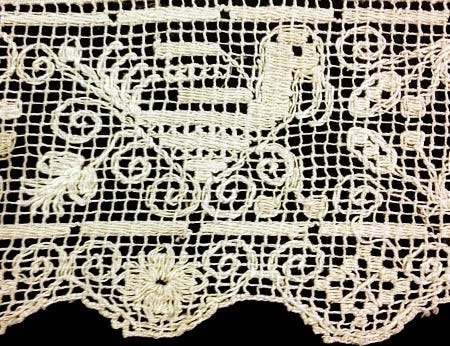
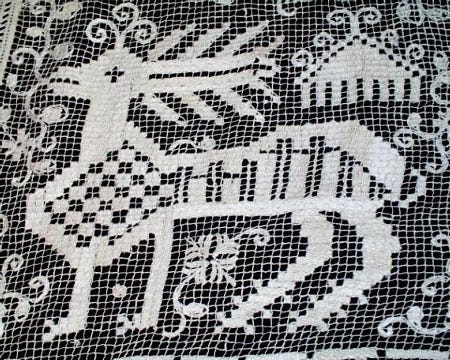
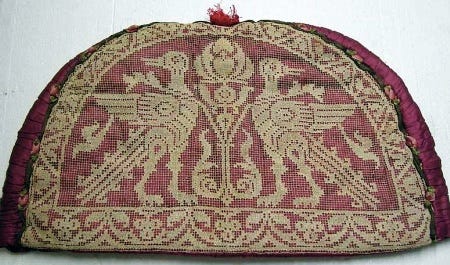
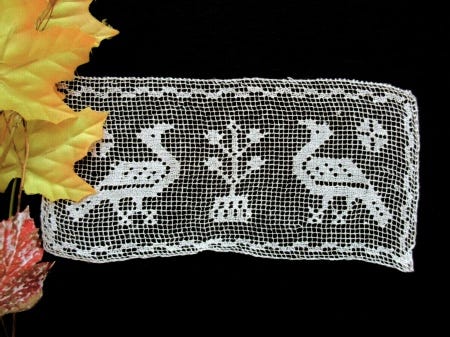
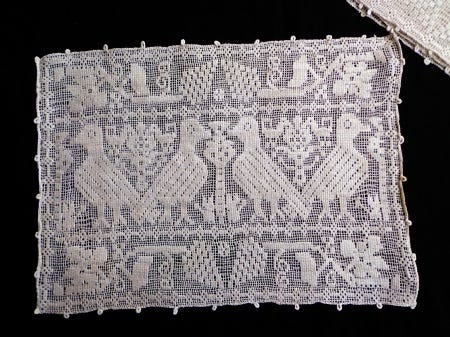
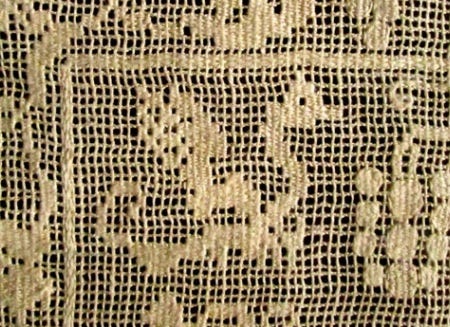

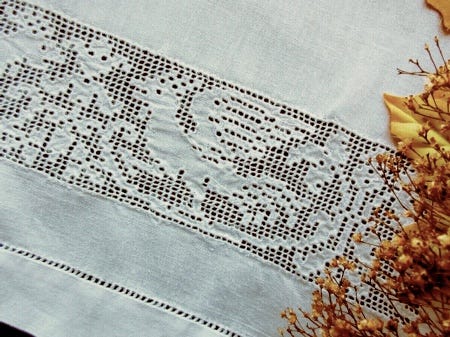
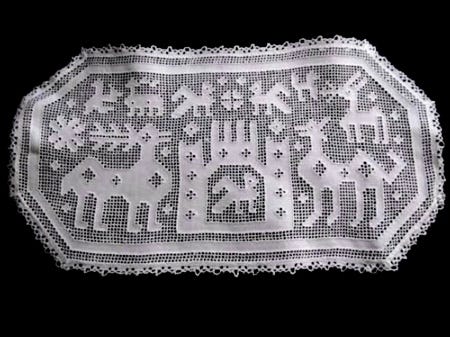
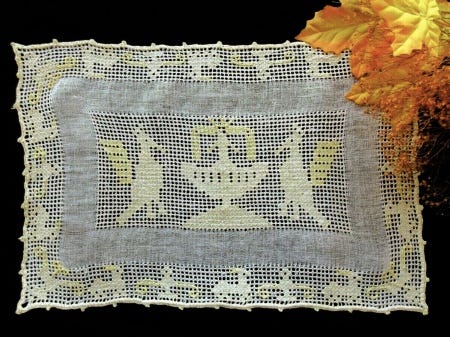
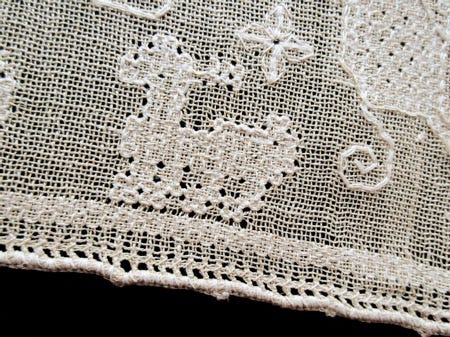

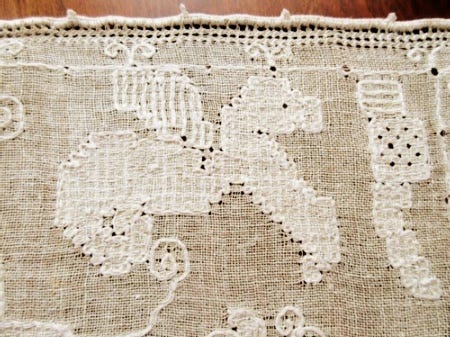
I believe your guesses were right on the money and just saved me a lot of time. I would have definitely missed the goats! Thanks for a fabulous post!
Your posts on lace will ensure that I never bypass an opportunity to look more closely at any lace product again!